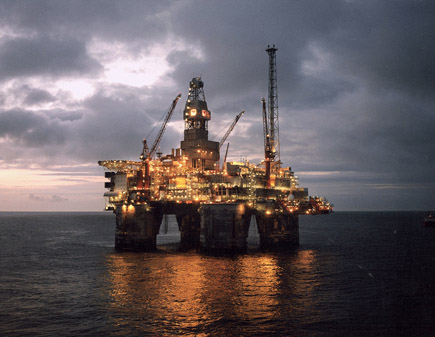 [Image: Courtesy of Statoil].
[Image: Courtesy of Statoil].
I was flipping through a copy of Archive the other night when I came across a spread of recent print ads by Norwegian oil giant, Statoil. The ads featured cities and skyscrapers and the Roman Colosseum all Photoshop’d perfectly onto offshore oil derricks; they looked like instant and futuristic offshore micro-utopias – or perhaps even some weird, mechano-robotic version of Arnold Böcklin‘s Isle of the Dead.
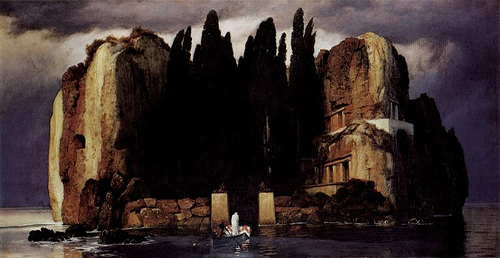 [Image: Arnold Böcklin].
[Image: Arnold Böcklin].
In any case, I wanted to post the ads here – but all I could find online were Statoil’s own press images. Those, however, induced a kind of minor panic attack, as the offshore structures they document easily rival, and possibly surpass, the most far-fetched architectural speculations of Constant Nieuwenhuys.
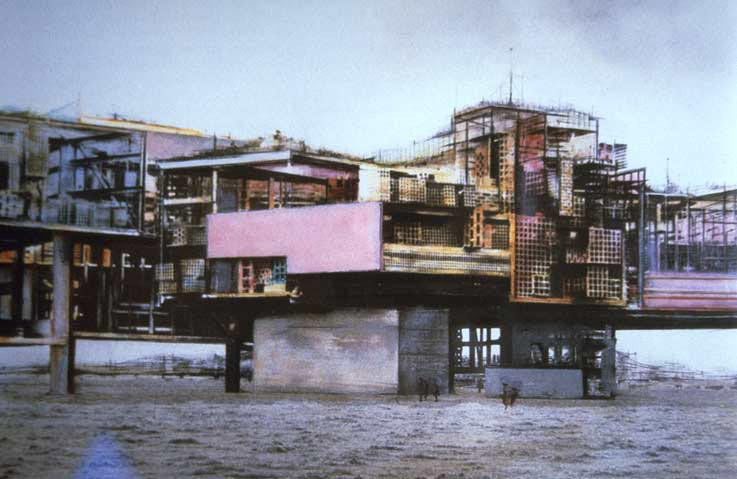
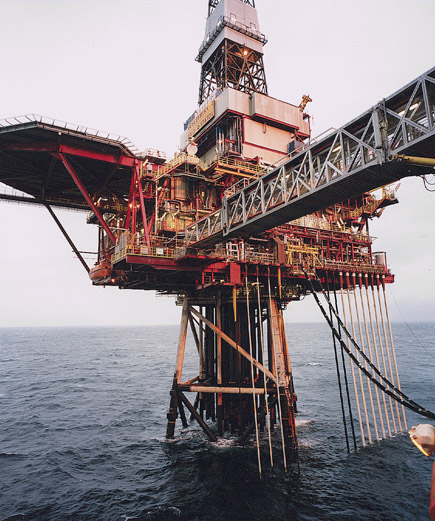
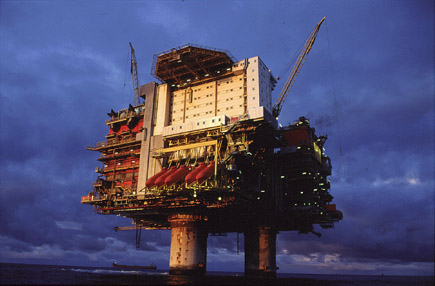 [Images: Constant vs. Statoil].
[Images: Constant vs. Statoil].
So here are some photos – and anyone who runs across online versions of the Statoil ads, let me know.
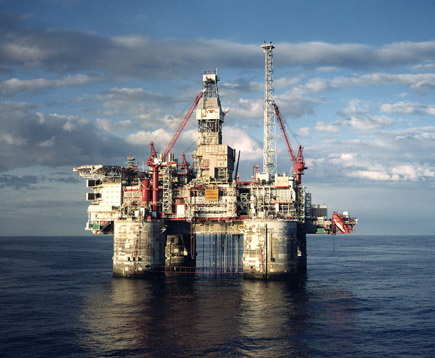
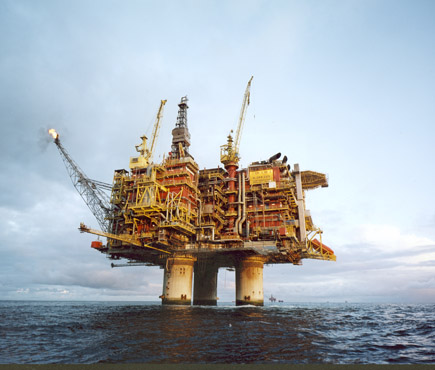
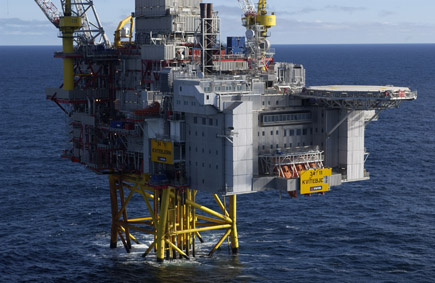 [Images: Courtesy of Statoil].
[Images: Courtesy of Statoil].
These next two shots were actually taken inside the legs of one of the derricks; as such, the photographer is standing below sealevel.
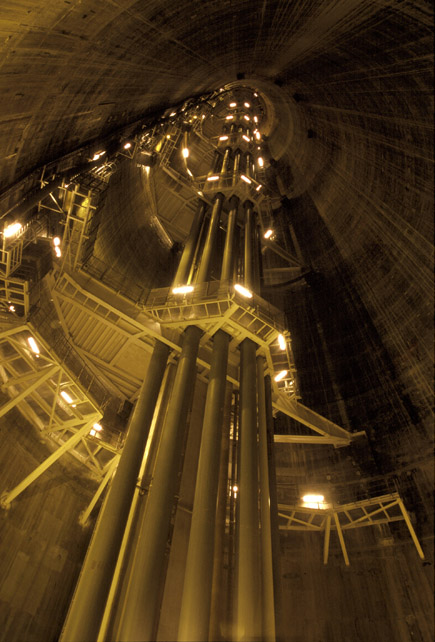
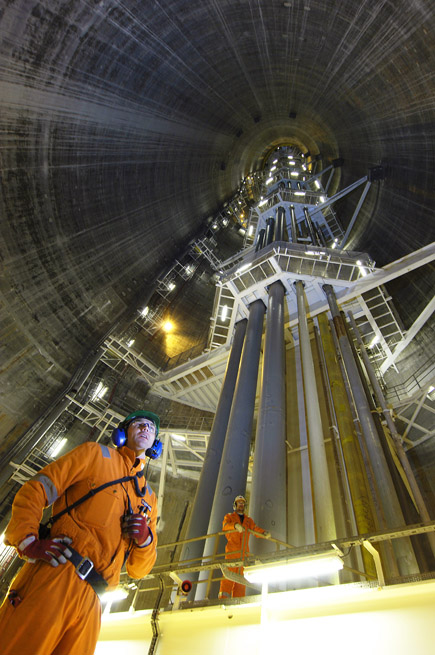 [Images: Courtesy of Statoil].
[Images: Courtesy of Statoil].
But then I got to thinking how, toward the beginning of The Aeneid, we read that Aeneas and his crew have been tossed about by a string of storms and bad navigation, moving island to island against their will:
For years
They wandered as their destiny drove them on
From one sea to the next…
They are accidental exiles, always docking on the wrong shore.
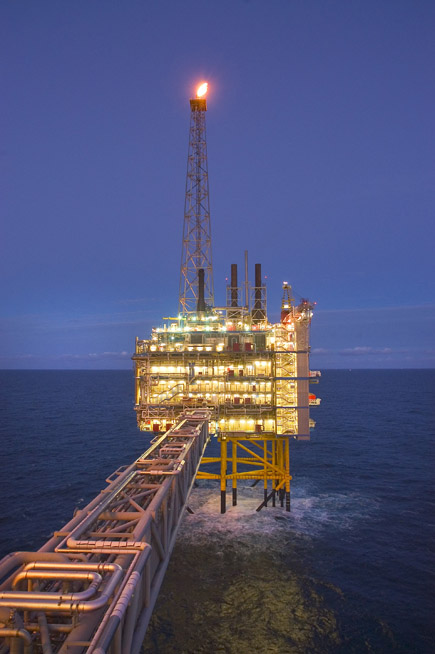 [Image: Courtesy of Statoil].
[Image: Courtesy of Statoil].
Unsurprisingly, Aeneas is soon fed up with trying “[t]o learn what coast the wind had brought him to,” so he confronts a random islander – not realizing that it’s actually his mother (his mom happens to be Venus, and she likes to wear disguises). He demands:
Tell us under what heaven we’ve come at last,
On what shore of the world are we cast up,
Wanderers that we are, strange to this country,
Driven here by wind and heavy sea.
Etc. etc. – it’s the endless drama of origin and detour.
My point is simply: how might the Aeneid have been different if the Mediterranean Sea they’d explored had actually been full of oil derricks, a manmade geography of machine-islands, industrialized stilt-kingdoms each more fantastic than the rest – and so they’d set sail beneath the anchored legs of support understructures and maintenance gantries, roping up their ships for the night in the shadow of artificial hills and disguised islands? An Aeneid for the machine age.
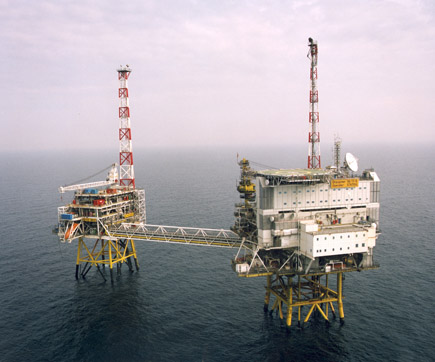
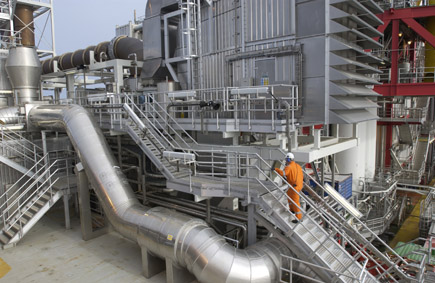 [Images: Courtesy of Statoil].
[Images: Courtesy of Statoil].
More practical questions include the reuse of these structures: what unintended future functions might these aging derricks be repurposed for? Once their fields run dry, will they be left standing till inevitable collapse? Or will a maritime preservation movement swoop in to save them?
Further, will corporate tax havens of tomorrow be built at sea, in private archipelagos of platform-cities, an experimental terrain for new concepts of financial sovereignty?
[Note: Just to be absolutely clear here, all images of oil derricks used in this post come courtesy of Statoil].
great images…but i’m just baffled every time I read an oil giant’s sustainability statement and Statoil’s Akassa project is a bit dubious as well – Sofiri Joab-Peterside (PhD.) from Berkeley University has written an interesting paper – part of the Greene Governance series – where he states that: “I contend that the practice of corporate philanthropy assume the forms of welfare handouts that are not proportional to environmental damage caused by oil exploration and exploitation, fails to deal with power question associated with community development projects, and creates donor dependent development. However, multinational oil companies operating in the Niger Delta have used promises of community development to compete with one another and to attract international attention” (http://globetrotter.berkeley.edu/GreenGovernance/papers/JoabPeterside2006.pdf)
Not too long ago, I was in Sabine Pass, TX, right on the coast where TX meets LO. And lo and behold, I saw a graveyard of offshore oil rigs.
I should have investigated, but I was with some people who wanted to go to TX Audubon’s Sabine Woods Preserve.
You can see the derelict derricks on GoogleEarth. No doubt there are more places like this, too.
Shell had a major PR wobble in the UK with its plan to dispose of the Brent Spar tanker/buoy by sinking it in the North Atlantic: http://en.wikipedia.org/wiki/Brent_Spar_oil_rig
I doubt European public opinion would allow such structures to be abandoned.
I’m thinking of Penal Colonies 40 miles off the coast of Galveston, or hideouts for Filipino pirates in the South China Sea between Manila and Saigon. Spaceports just a short ferry ride from Perth, a mechanical archipelago linking Key West with Havana filled with booze and dark skinned women.
Beautiful images and, even more to the point, beautiful creations. Every superfluity has been stripped away, or simply left off. The result is pure, complex purpose and utility, with an urgent esthetic that is palpable and undeniable. These sublime urban seascapes make the landmass seem almost negligible — not an afterthought but a pre-thought.
But in swooning over the pictures I didn’t think of the Odyssey. Instead, I thought immediately of Kevin Costner’s underrated movie Waterworld. It could be that some day, sooner than we think, what remains of our race will live perched above the shimmering ocean surface, just like this. Let’s hope we have habitations as sublimely designed as these.
BTW, how much does Satoil pay?
I’m sure there is a post on Sealand somewhere on BLDGBLOG, right? If not then search it. Or Roughs Fort/Tower as it is also known. Just off the East coast of England. They planned the tax haven business and all that.
Thank you for these images! I’ve just moved to Santa Barbara, where the beautiful coastline is spotted by a handful of rigs in the distance. These pictures help to humanize them a little, perhaps, or do the opposite.
I love your remarks at the end. There are so many wonderous places built by industrial infrastructure. I think, for instance, of the marvelous refineries buried between the mountains in West Virginia that one occasionally passes on the highway. What fantastical living spaces they might be, or animal refuges, or coral reefs.
Nathan S
I happen to be reading David Brin’s “Kiln People”. One of the major characters is named Aeneas. Now you’ve got me interested in finding out his reasoning for naming the character after the one in the Aeneid.
uglyangel: I’m pretty sure that if all the ice on the planet melted, there would still be continents. But we’d have a whole lot more problems to worry about well before then.
Heya, excellent post. lovely imagery and imagination.
– curious to know, for my own fyi, did you actually get permission from Statoil to post their pictures, when you said:
“[Note: Just to be absolutely clear here, all images of oil derricks used in this post come courtesy of Statoil].”
Nathan – Great shot. Will have to check those rigs out in person someday.
And Joe Prole, I have indeed written (briefly) about Sealand here, in The Helicopter Archipelago. But don’t miss the Maunsell Towers, including the so-called Texas Tower.
And, Parallax, I’ll definitely look for those on Google Earth. Sounds cool.
Finally, j, Statoil’s media relations page gives blanket permissions for image-reproduction, provided you credit all images to Statoil. So, to be sure, I added that note at the bottom of the post, to ensure that credits/links, etc., aren’t in doubt. It seems similar to the way NASA does images, for instance; you just have to credit NASA (“Courtesy of NASA”), blah blah blah, though the specifics vary. Etc etc. You can see the credit expectations on Statoil’s media page.
And Michael, I’ll visit your mechanical archipelago once you’ve built it…
I just posted all the Statoil ads that I mention at the beginning of this post.
Link: Offshore (again).
So check ’em out…
I like the pictures here. Kinda reminded me of my dad’s off-shore pictures of oil rigs which he used as desktop wallpapers.
am working for an international oil exploitation company and i fell in love for Offshore
its so wonderful and marvelous , i cam people interstand that iis an another world ….
None of the photographs are of oil rigs. They are oil PLATFORMS. Rigs are mobile and are moved around. These structures are fixed in place for their duration.
Both in the North Sea and the US Gulf of Mexico, there are laws which require the owners of platforms to remove them after their wells are no longer productive. In the Gulf, they’re suppose to leave the area as they found it. It all sounds well and fine until you consider that each one of these massive structures have become beautiful artificial refs in the 40 or so years that they’ve been in place. Thus, when we remove them, we do eliminate the hazzard to marine transportation but we kill mega tons of corals, shell fish, plant life and fish. Platforms in the gulf become most beautiful habitats for all levels of sea life … from the surface dwellers to the bottom feeders.
The super structures are recycled as there’s mega dollars in steel. The bottoms are also recycled or moved to designated “reef sites” because there’s so much sea life attached to the legs and supports that the cost of cleaning them for recycling offsets the profit of recycling the steel.
By the way, there’s no oil rig grave yard in Sabine Pass, TX. Those rigs were new construction, being refurbished, awaiting new contracts and/or being recycled.